Petunia "Gioconda F1": features, types and cultivation
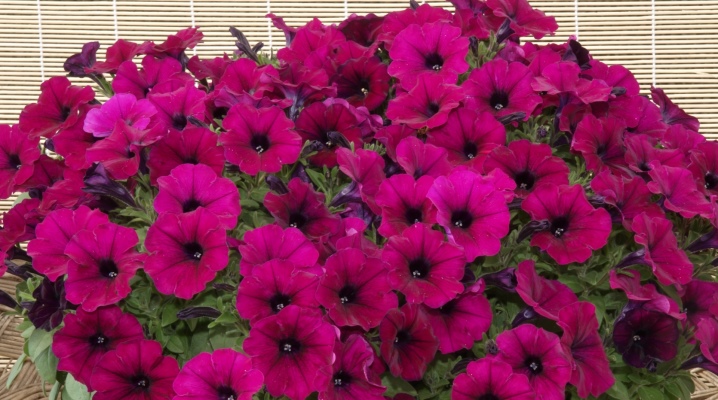
Petunia "La Gioconda F1" is wonderful flowers, huge and tiny, double and ordinary, growing in pots and cascading in flower beds. A variety of varieties "Mona Lisa Saturn blue F1" and mini amaze with their originality, which is so loved by flower growers.
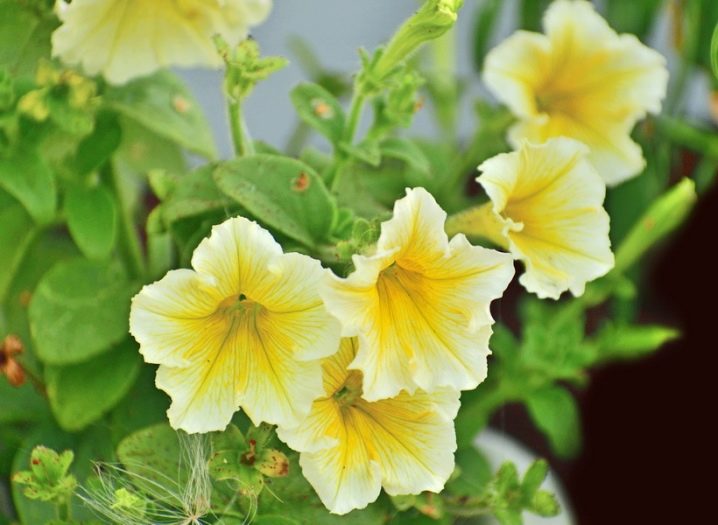
Description
Petunia "Gioconda F1" is a new-fashioned hybrid crop that has made a big breakthrough in the selection of the best varieties. The uniqueness lies in the fact that it has a colossal number of flowers and colors. This kind of amazing result is achieved due to reliable sterility, since in this case the flowers do not produce seeds. Petunia begins to bloom at the initial stage of plant formation and with systematic grooming, the continuity of flowering can last 12 months, despite the fact that the plant belongs to one year old.
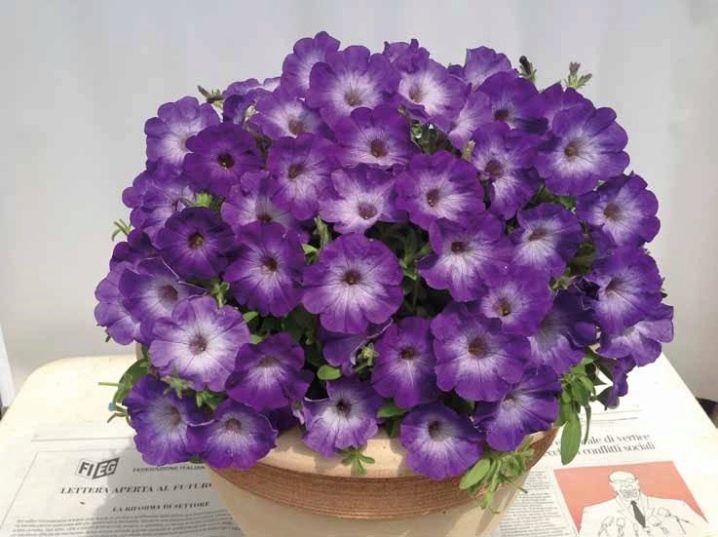
Petunia "La Gioconda F1" easily competes with surfinia, propagating cuttings. Of extraordinary strength, branching stems (up to 1 meter) are ready to cover the ground with a flower rug, having a height of 20 centimeters. The diameter of the flower is relatively small - in general, from 6 to 9 centimeters. When breeding in pots and vases, the shoots hang in large quantities over the border of the flowerpots.
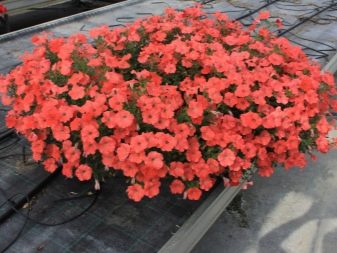
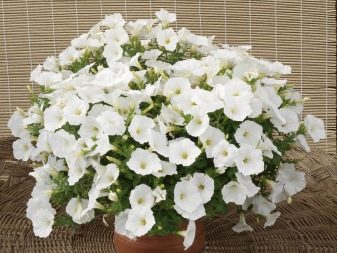
The special phenomenality of the flower is expressed in vitality, which allows it to adapt to a large range of temperatures.
A significant temperature difference, ranging from -8 to + 40 ° C, prepares the flower for any atmospheric problem. It is easier to grow in Nordic latitudes, because they should not be afraid of recurrent cold and sudden atmospheric changes. With a decrease in air temperature, the growth of the hybrid slows down, but this does not lead to its death. This plant category belongs to very resistant varieties.

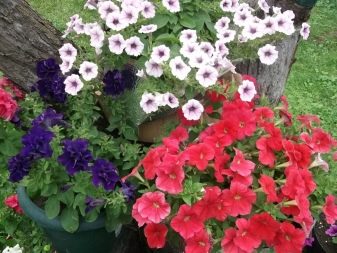
Important! All Gioconda F1 petunias are light-loving flowers that can grow comfortably only with guaranteed light supply for 11 hours. If you keep petunia in extremely suitable conditions, then the blooming of flowers can be extended up to 1 year. This invaluable property reveals unused potential for flower growers.
When grown in hinged baskets and pots, the petunia "Gioconda F1" competed with the best types of ampelous petunias. The regularity in the distribution of flowers on the stems forms luxurious garlands. The difference between this type of petunia is that the plant feels equally good both during the period of growing seedlings and when planting on a permanent site. Due to this invaluable quality, it is ideal for preparing seedlings in greenhouses. The flower is very durable, strong, blooms at the initial stage of formation. The analyzed species of petunias is the most resistant to diaper rash and diseases than several other known species and hybrids. For this reason, this variety can be used extensively in various fields with different climatic criteria.
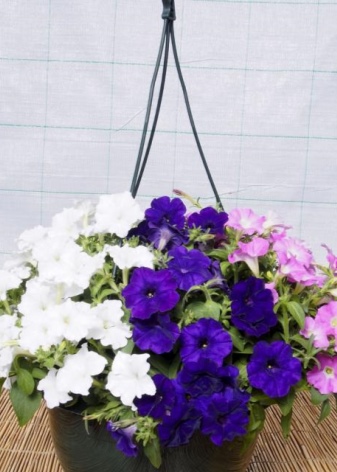
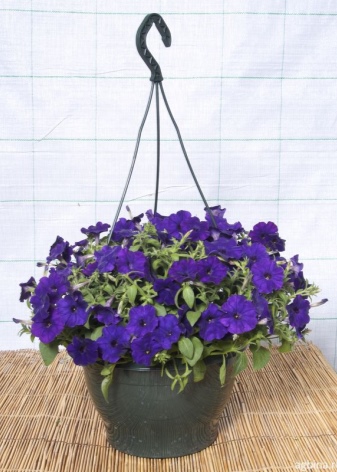
Varieties
The variety of types of petunia "Gioconda F1" is quite large. There is such a color of the buds as blue velvet, blue, blue-white, black, purple, starry, salmon, neon, purple, orange, fuchsia, pale pink, yellow, red, peach, as well as a mixture of different shades.The multi-flowered cascading cascading petunia “Gioconda F1” is available in scarlet, purple, salmon and neon colors, and large-flowered in another color.
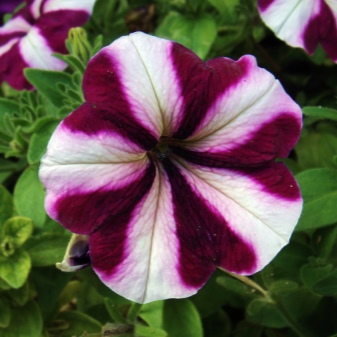
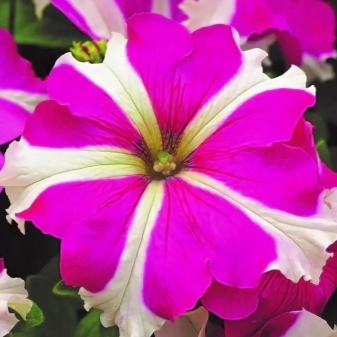
Especially noteworthy scarlet "Mona Lisa F1" with many flowers, attracting the eye with a huge number of colorful flowers that cover the flower garden with a luxurious attractive top. When a scarlet petunia is grown in hanging pots, then we see an attractive cascade of flowers, the length of which is 1 meter. To maintain all this beauty, regular care is needed.
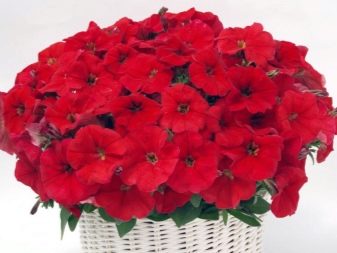
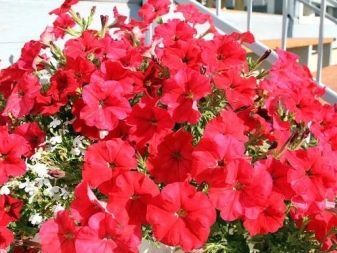
Petunia "Mona Lisa mini F1 blue velvet" - it is a lush and generous bloom, thanks to which a major mood is created. The hybrid creates a plant with a neat small-sized bush, the height of which is from 25 to 30 centimeters and the diameter of the flowers is from 5 to 6 centimeters. The bush retains its attractiveness throughout the whole season, it is never exposed in the middle, since it has the genetic ability to perfectly branch from the very base. Luxurious flowering is due to genes for male sterility - plants do not form grains, but try to produce a large number of flowers.
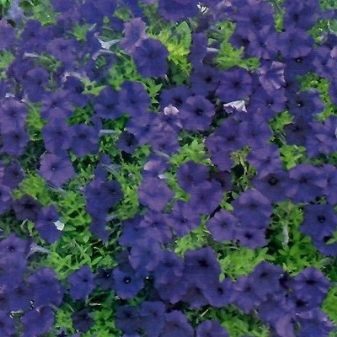
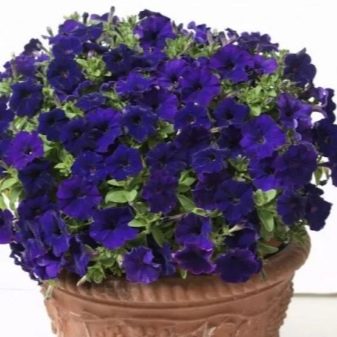
Petunia "La Gioconda Saturn blue F1" - an amazing number of beautiful flowers. It also belongs to a series of hybrids with the richest blooming façade due to male sterility. This species is considered to be a strong plant with a powerful spreading configuration. It is used to decorate garden flower beds, ridges and to form ampel outfits of a terrace, balcony, loggia. The bush, only 20 centimeters high, covers the ground with a colorful blooming carpet up to 1 meter in diameter.
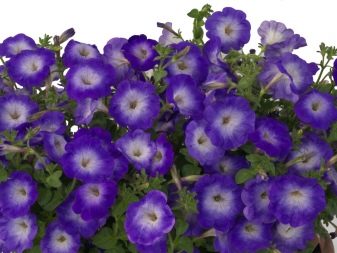

Petunia "La Gioconda Sea Symphony F1" - a hybrid decorative series with a consistent flowering configuration. It is distinguished by dense flowing processes, strewn with numerous flowers. The flowering interval is from the beginning of June to the first frost. Branches up to 1 meter long are used as outfits to decorate multi-storey systems. Blue and snow-white large-flowered petunias look great in a flower bed. Keeping a distance of 30 centimeters in the row of seedlings, the plants try to crawl upward, achieving the largest border of 20 cm, creating graceful snow-capped hills. A distance of 60 cm makes it possible to purchase a long, uniform rug that runs along an alpine slide or rockery.
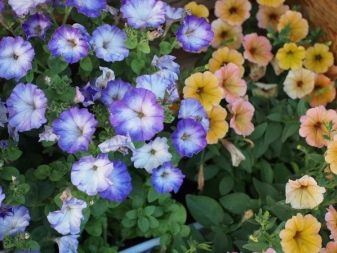
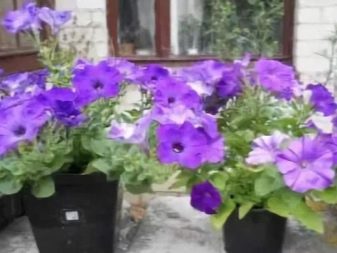
Landing
Mass species of petunia "Gioconda F1" are reproduced by grains. Petunia seeds are sown in winter, at the end of February or early March, in specialized seedling boxes in moist soil. Seedlings are grown from grains. The formed seedlings grow back within 3 months. It is necessary to prepare the soil for planting in advance, sift it, and irrigate it generously. In order to equally divide the grains in the soil, they are mixed with sand. Further, they are sown, watered with a spray bottle and covered with glass or film.
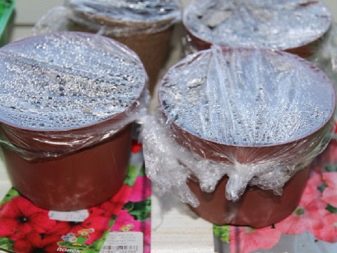
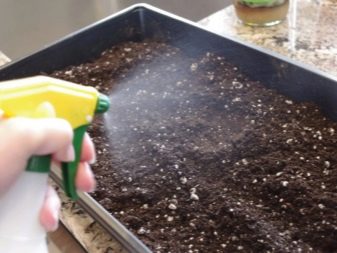
Seedlings purchased or grown at home must be planted in universal or self-formed soil - the composition of earth, sand, vermicompost. The presence of lighting is pretty basic. For example, you will need to install a special lamp for lighting so that the embryos grow powerful and ripe. Petunia seeds are scattered over the top of the soil, since they are very small, and they are slightly covered with soil.
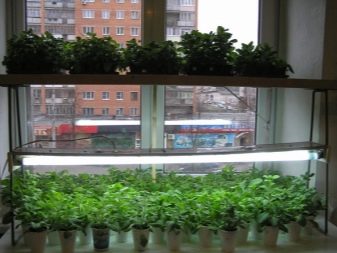

Important: to avoid losing the seeds, use tweezers.
Do not use alkaline and acidic soil. Nothing will grow in this consistency. Choose loose, highly nutritious and moisture-retaining soil. You can do the preparation of the soil for the growth of seedlings yourself. To this end, mix the composition of humus, deciduous and sod soil with a small amount of sand and peat. Mix and sieve, the resulting composition should be homogeneous and free from the presence of stale lumps.
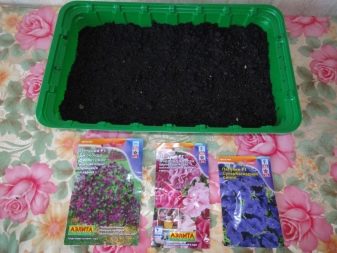
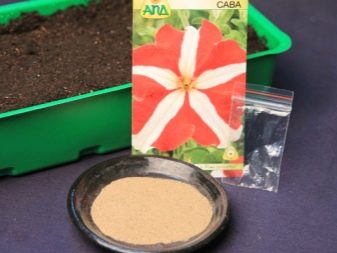
It is necessary to construct a small greenhouse with a film or cover it with a small piece of polycarbonate. The optimum temperature for the growth of seedlings is within + 20– + 23 ° С. Remember that the soil should not dry out, but it also cannot be wet. Open the greenhouse every 2 days, let the soil breathe for a short time. The initial shoots will appear on the 5-7th day. At this stage, it is necessary to provide the plant with more air. Open the greenhouse for 10 minutes, lengthen the time each time.
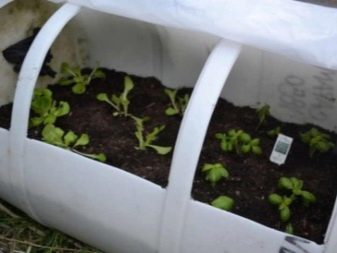
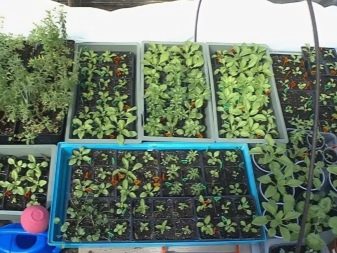
When the seedlings grow up, strong leaves appear, then they make a dive. Already after picking and transplanting plants into various cups, it is necessary to pre-prepare the seedlings for planting in the ground on a daily site. Therefore, you need to "teach" the plant to reduce the temperature of the air, opening the window for a short period of time. In this way, the seedlings will be strengthened, and planting in a public flowerbed will not become a climate shock. The Gioconda F1 plant adores light-loving zones and frequent, moderate moisture. Although petunias need a lot of water, it is necessary to beware of its stagnation. The soil at the base is loose and flavored. Humus and specialized formulations can be used as fertilizers.
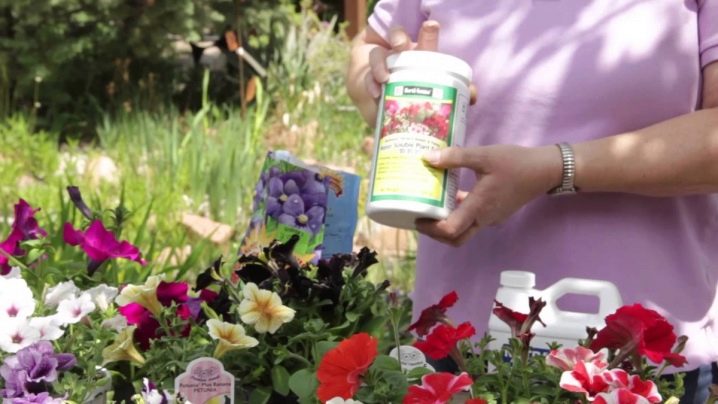
Petunia varieties "Gioconda F1" are not very whimsical to the ground. But the more nutritious the soil, the more colorful the flowers bloom in the bushes. Between the bushes of the multi-flowered type, you need to make a different distance. If you plant plants with an interval of 30 cm, the bushes will become cramped, for this reason they will stretch upward. The most frequently mentioned 20 centimeters will become the flower bed level. And if you keep 60 cm among the bushes, then an insignificant, but very extensive, spread rug will form. For the design of a rockery or an alpine slide it will be very attractive.
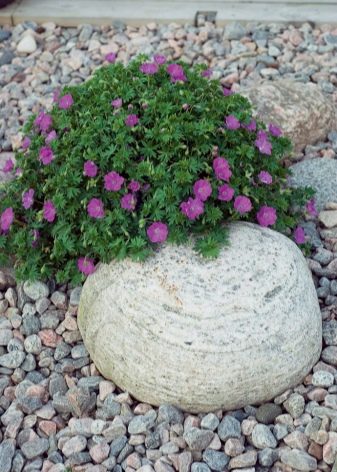

How to care?
In order for a strong and beautiful petunia to grow, you need to form bushes, therefore, it is necessary to remove the processes, thereby spurring the formation of other flowers and branches. It is worth paying attention to a few points when caring for a petunia.
- Light. Like other petunias, Mona Lisa F1 is very fond of light. She feels great in the most well-lit place. If the flowers grow indoors, remember that they need lighting up to 11 hours a day.
- Temperature... Earlier it was stated that the temperature "bar" of this petunia is very spacious. However, in order to further healthy growth and long-term flowering, the flower needs a climate of + 20– + 22 ° С.
- Watering. Petunia loves water, so it needs to be watered 2 times - in the morning and in the evening. Water in a small amount, but not cold. Take either heated water or room water.
- Top dressing. Gioconda F1 requires nitrogen during the seedling season. And if flowers appear, then we add potassium-phosphorus fertilizers, which strengthen the roots and provide support during flowering. We do the first top dressing 7 days after planting the seedlings in the soil. Petunia must be fertilized once every 14 days with complex organic matter with a high potassium content. Subsequent fertilizers are added 2-3 times a month.

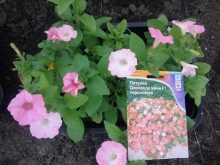

Important! All wilted flowers, without exception, must be removed. In order not to hurt the trunk of the plant, it is better not to pinch off, but cut off with a pruner.
Breeding petunia "Gioconda F1" does not stand out from all other types of flowers. The choice of land does not require much choice. This plant has an amazing ability to adapt to any soil. However, if you want to form the ideal microclimate of your favorite petunia, in this case it is necessary to combine the compositions of turf, deciduous soil, add sand, humus, peat - mix it all up. Do not forget that alkaline and strongly acidic soils are harmful to these flowers.
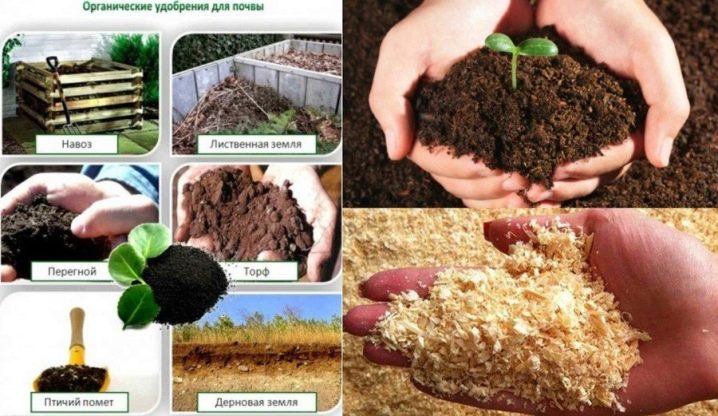
For abundant, long-lasting flowering, fertilizing should be done from organic and mineral fertilizers.The interval from one to another feeding can be from 10 to 15 days. Vitamins in the form of granules are comfortable to use, they are simply put in the ground around the bush and poured with water. They irrigate the soil constantly, but the main thing is not to let the soil get wet. For petunia to delight with wonderful flowers, sluggish buds must be removed regularly, as the outer appearance will become unkempt and unattractive. This event takes very little time, but it must be done regularly. In addition, eliminating sluggish buds promotes the formation of new ones.
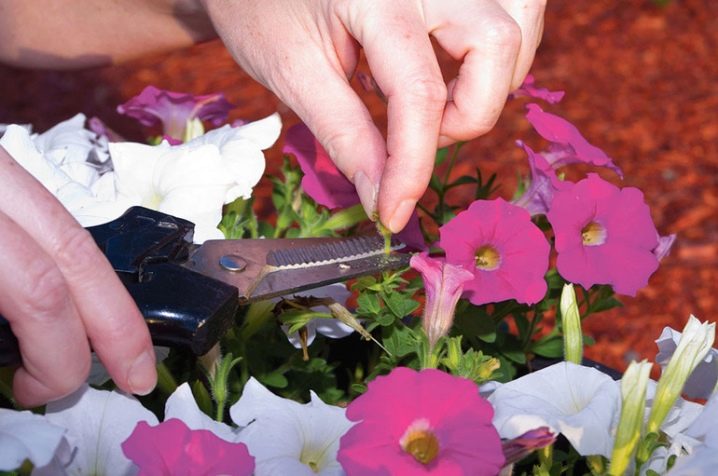
Reproduction
Petunia "La Gioconda F1" reproduces both by cuttings and seeds. Only the first method is a little difficult, since it is difficult to find cuttings of the mother bush in winter, but it is worth trying in summer.
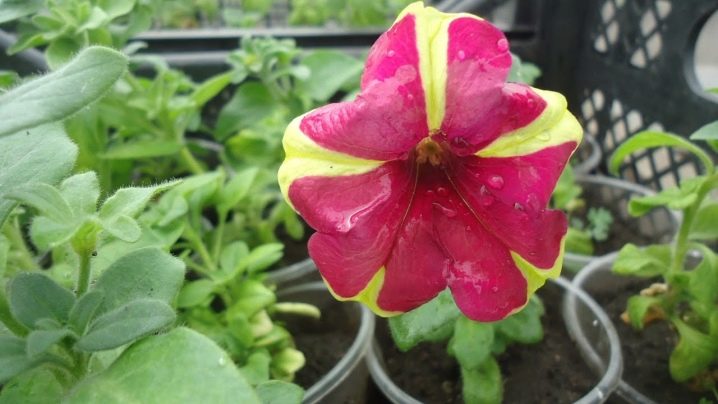
Cuttings
The grafting process is as follows:
- we cut off a strong process up to 10 centimeters long;
- we dip it into the "Kornevin" powdery powder or its similitude;
- we plant in a simple and plentiful soil - it would be nice to make a composition of sand and peat moss, although we take the soil from the previous petunias, add sand and the soil is ready;
- the offshoot is obliged to strengthen on this soil for 10-15 days; if a new leaf appears, then there are roots.
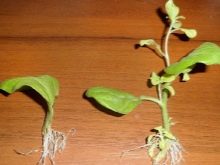
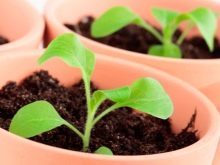
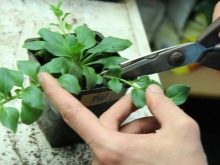
Seeds
Seeds are a little easier. They must be purchased and sown at the end of February or at the beginning of March. It is worth adhering to the following algorithm of actions:
- the grains are placed in a container with soil, but at the same time they do not deepen;
- grown under a micro-greenhouse with lighting and heat, the temperature should be + 22– + 26 ° С; the sown seeds appear on the 5th day;
- when the first leaves appear on the seedlings, disassemble the microsteam;
- two real leaves grow, you can dive into separate cups, but it is preferable to pinch the roots so that the roots of the young plant develop more correctly;
- after this operation, the seedlings are kept in a semi-dark place to make it easier for them;
- before planting in an open area, strengthen the seedlings, take them out to the loggia or terrace for 11-15 minutes a day.
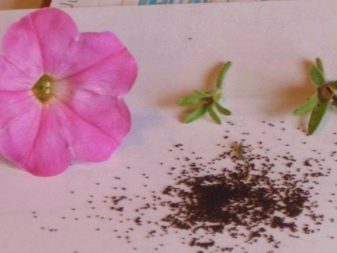
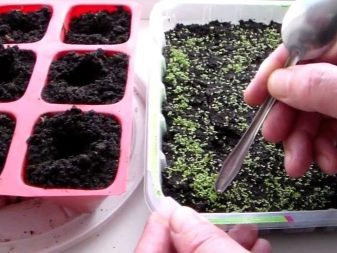
Diseases and pests
Petunia "Gioconda F1" can suffer from fungus, if dense seedlings, flowers in very saturated soil, or the plant is watered abundantly with water. The most common fungal disease in petunias is root rot. In addition, she in some cases suffers from powdery mildew. It is worth adhering to the following recommendations:
- do not profit by choosing the soil in the country, but after typing, be sure to process it in the oven, the high temperature will destroy everything that is bad, without exception, and then mix it with sand;
- do not sow or plant too densely;
- water carefully;
- when fertilizing with nitrogen, be careful, because its excess in the soil gives rise to fungal diseases.
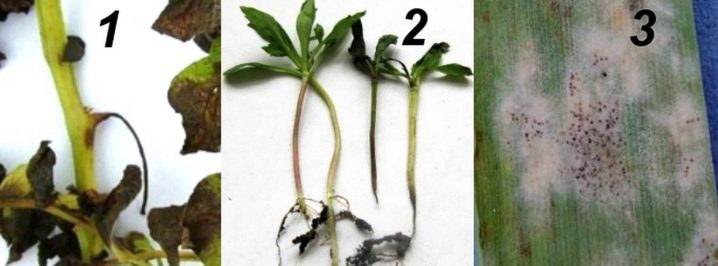
Therapy of the disease is as follows:
- if root rot has appeared in the container, remove the diseased bush and, in addition, that part of the soil where there could be contact;
- treat the rest of the plants in the container with "Fungicide"; it is advisable to water the earth with this substance;
- for subsequent irrigations, use less water than before.
Spider mites, whiteflies, and aphids are the true pests of petunias. You can get rid of uninvited visitors with the help of an insecticide solution seasoned into a spray bottle.
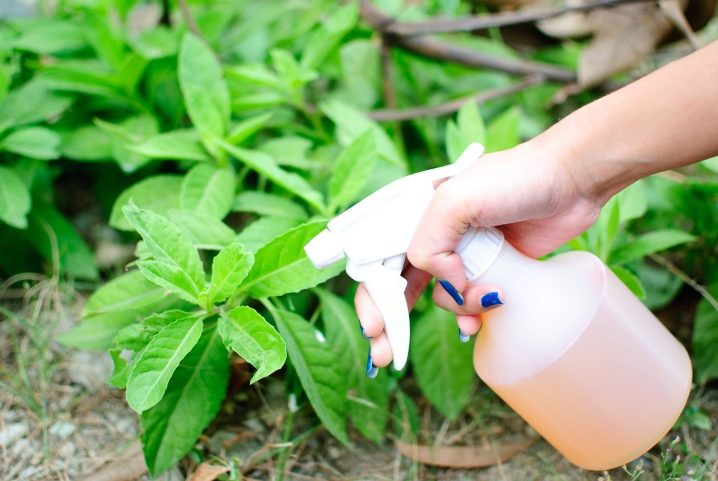
Reviews
Amateur flower growers generously share their results in petunia breeding, focusing on simplicity and jewelry grace. According to their judgment, anyone is able, adhering to simple principles, to grow this excellent flower, thanks to which he will delight in inimitable beauty throughout the summer period. Really unique petunia "Gioconda F1" is able to adapt to various weather conditions and any soil. The responses are full of praise for her simple departure and extraordinary duration of prosperity.

For information on how to properly care for the Gioconda F1 petunia, see the next video.







































































































The comment was sent successfully.